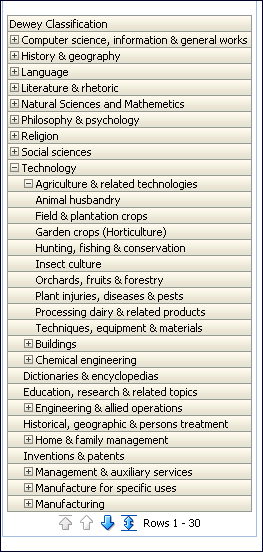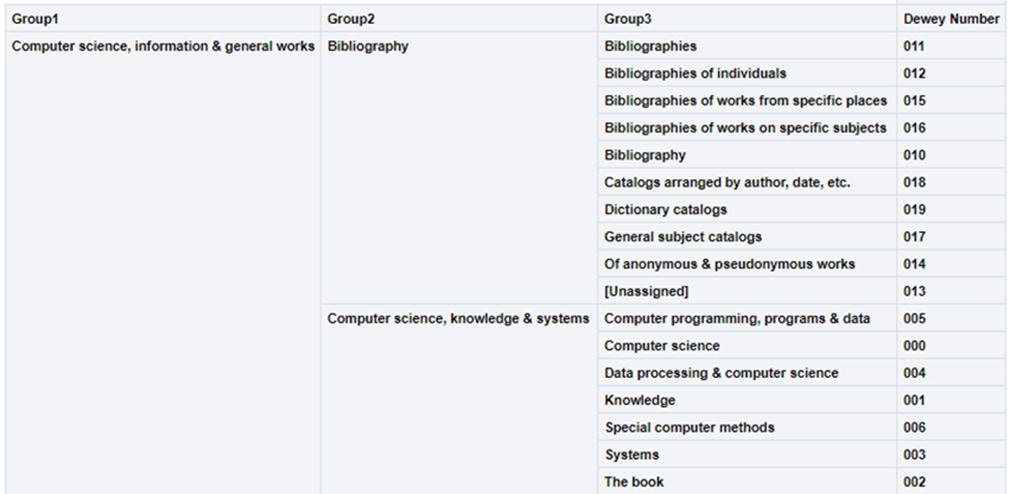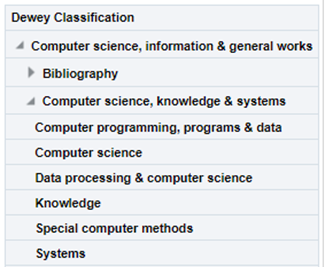Books can be classified with Dewey Classification. In Dewey Classification, topics are ordered in a hierarchy that is indicated by a three digit number. The highest level of the hierarchy is indicated by a number with one significant digit followed by two zeros, such as 600. The second level in the hierarchy is indicated by a number with two significant digits followed by one zero, such as 630. The third level in the hierarchy is indicated by a number with three significant digits such as 636.
For example:
- 600 Technology
- 630 Agriculture and related technologies
- 636 Animal husbandry
This is displayed in Alma Analytics as follows:
Dewey Classification
Each level is referred to by a numbered group (Group1, Group2, and Group3).
Using this dimension, the user may drill down from Group1 to Group3. In each level, the user may see measures accumulated to the relevant group.
Alma takes Dewey Classification information from the holdings level.
The Dewey Classification is displayed in Analytics in the Dewey Classifications shared dimension, available in several subject areas. Dewey classification information is derived from the bibliographic record in most subject areas, except for the Physical Items subject area, where it can be derived from either the holdings record or the bibliographic record.
From the Bibliographic Record:
There are three levels of the Dewey Classification stored in Alma Analytics. Each level is referred to by a numbered group (Group1, Group2, and Group3).
The group fields display the names as follows:
Dewey Classifications Groups
Using the hierarchy option in this dimension, the user can drill down from Group1 to Group3. In each level, the user can see measures accumulated to the relevant group.
For example:
-
000 Computer science, information & general works
o 010 Bibliography
o 000 Computer science, information & systems
This is presented in Alma Analytics as follows:
Dewey Classifications
If there is more than one classification code, the last one appears.
Dewey Classifications
| Field |
Description |
Data Type |
Size |
| Dewey Number |
The Dewey Number is a unique classification code assigned to a specific subject or topic category.
The first 3 digits of the Dewey Classification. |
VARCHAR |
15 |
| Group1 |
The name (label) of the first Dewey classification level. |
VARCHAR |
500 |
| Group2 |
The name (label) of the second Dewey classification level. |
VARCHAR |
500 |
| Group3 |
The name (label) of the third Dewey classification level. |
VARCHAR |
500 |
| Dewey Classifications |
The hierarchy column that allows the user to drill down from the first level of the Dewey Classification to the third level. |
|
|




